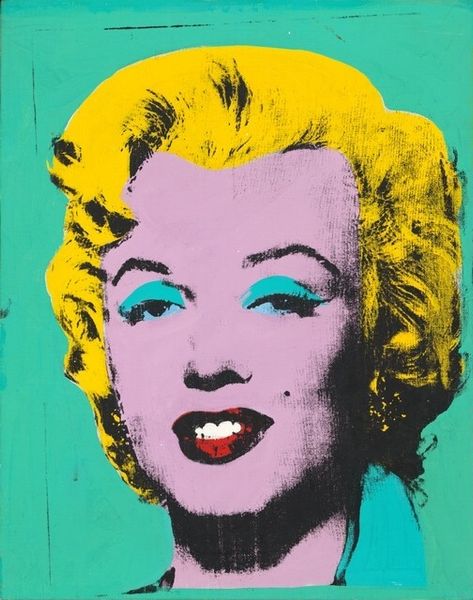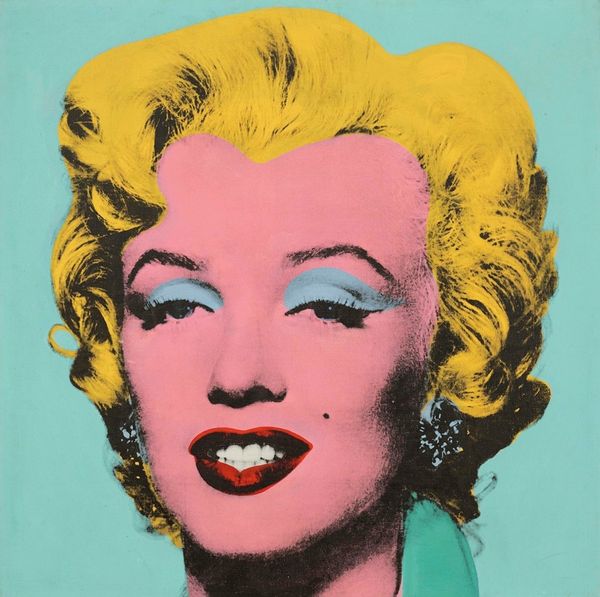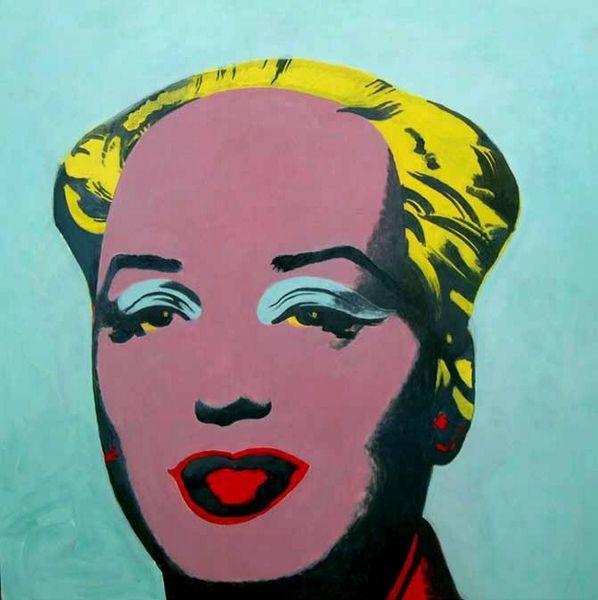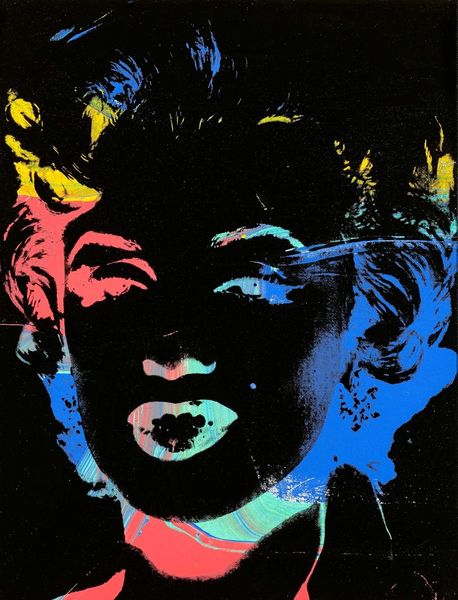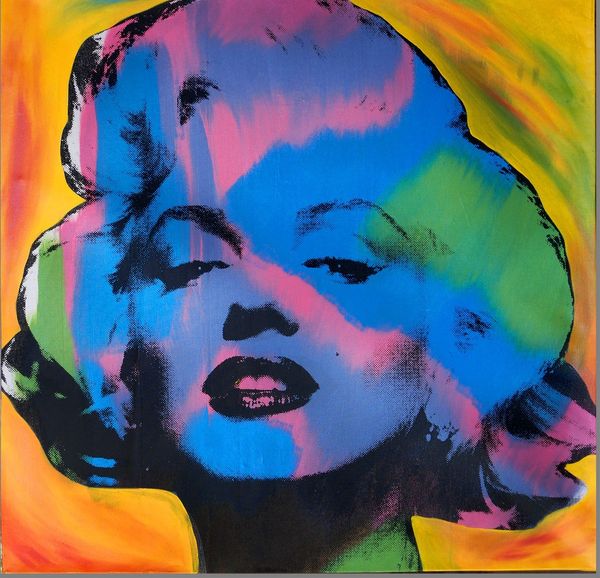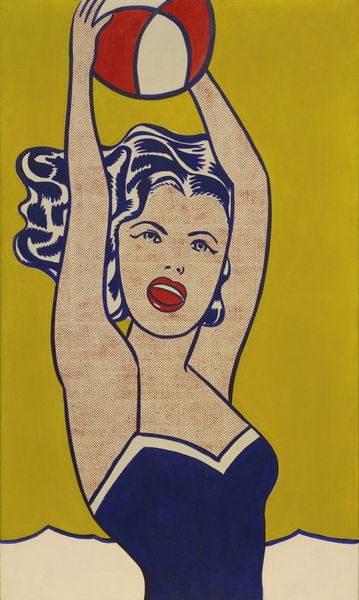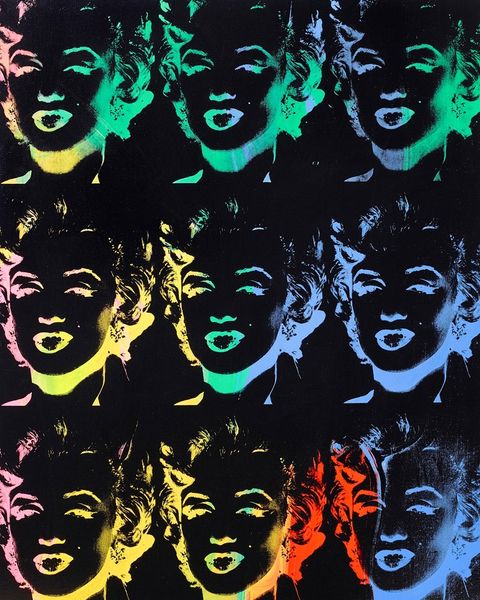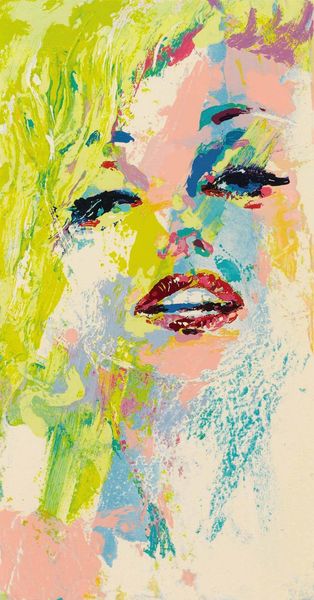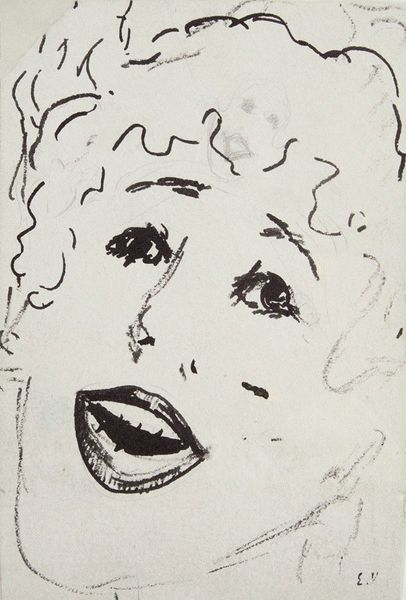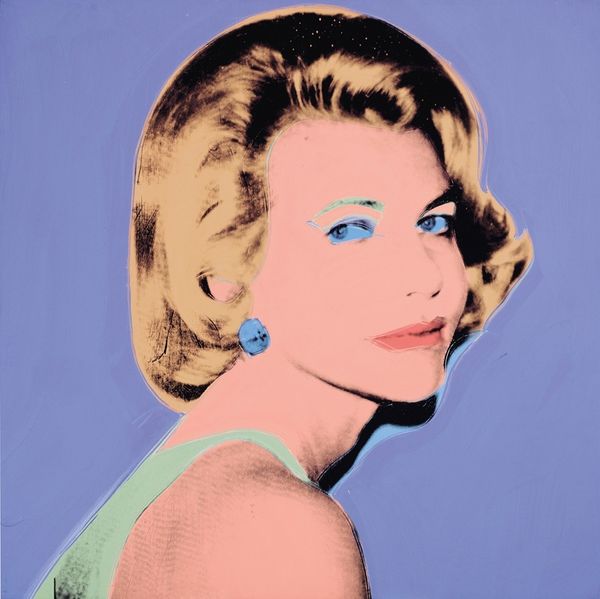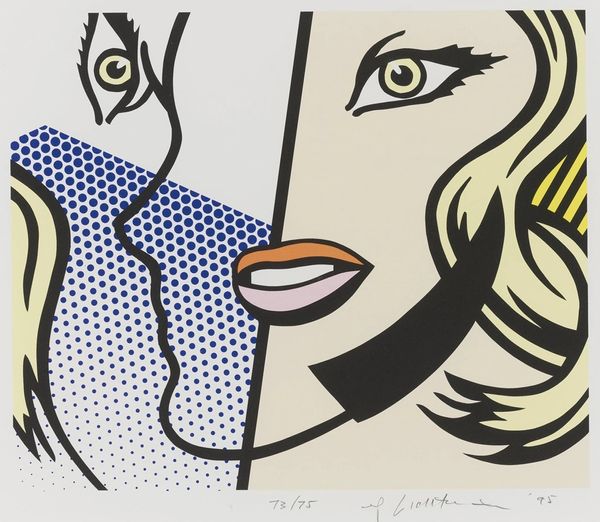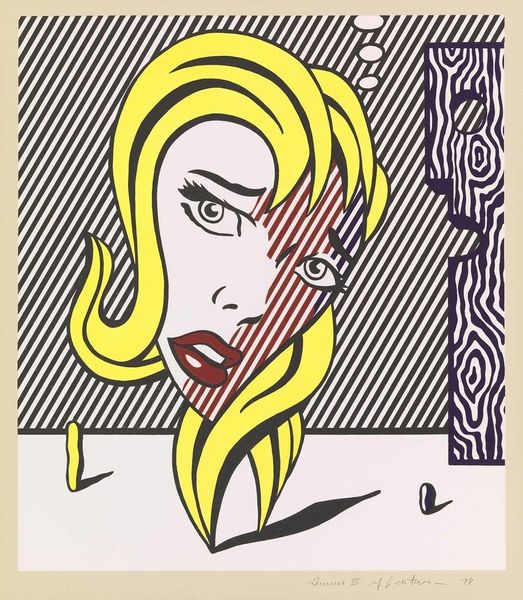
Copyright: Modern Artists: Artvee
Editor: Here we have Andy Warhol's "Four Marilyns" from 1962. It's a mixed-media piece, combining screen printing and painting. It's quite striking with those vivid colors. I'm intrigued by how the repetition affects the perception of the subject. How do you interpret this work, focusing on its formal elements? Art Historian: Indeed. Formally, "Four Marilyns" presents a fascinating study in seriality and variation. Notice how each panel, while derived from the same source image, possesses unique characteristics in terms of color saturation, alignment, and the crispness of the printed image. What does the variation, combined with repetition, evoke for you? Editor: It’s interesting. It makes me question the original image and the value that we attribute to mass media reproductions versus a unique "original". Each print is a little different in detail and it suggests mass production. Art Historian: Precisely. The formal interplay between uniformity and deviation creates a tension that invites closer examination. The flat expanses of color, rendered via screen printing, deny traditional notions of depth and volume. Consider, as well, how Warhol subverts the conventional portrait format. The flattening of depth coupled with seriality. How does this impact the image of Marilyn, do you think? Editor: Well, that flattness seems to further objectify her... reduce her humanity? At the end of our lives are we each a series of impressions in the minds of those who knew us, none precisely alike? I’m really starting to consider the piece's semiotic richness that exists beyond the mere portraiture of a celebrity. I had just seen bold color choices initially. Art Historian: A crucial point! The visual mechanics invite profound questions concerning reproducibility, authenticity, and the very nature of representation itself. We initially see bright colors and portraiture but it's a system of signs which demands our time and study. Editor: Right! Thanks! Looking closely at its construction opens it up to questions about our wider experience of modern media.
Comments
No comments
Be the first to comment and join the conversation on the ultimate creative platform.
